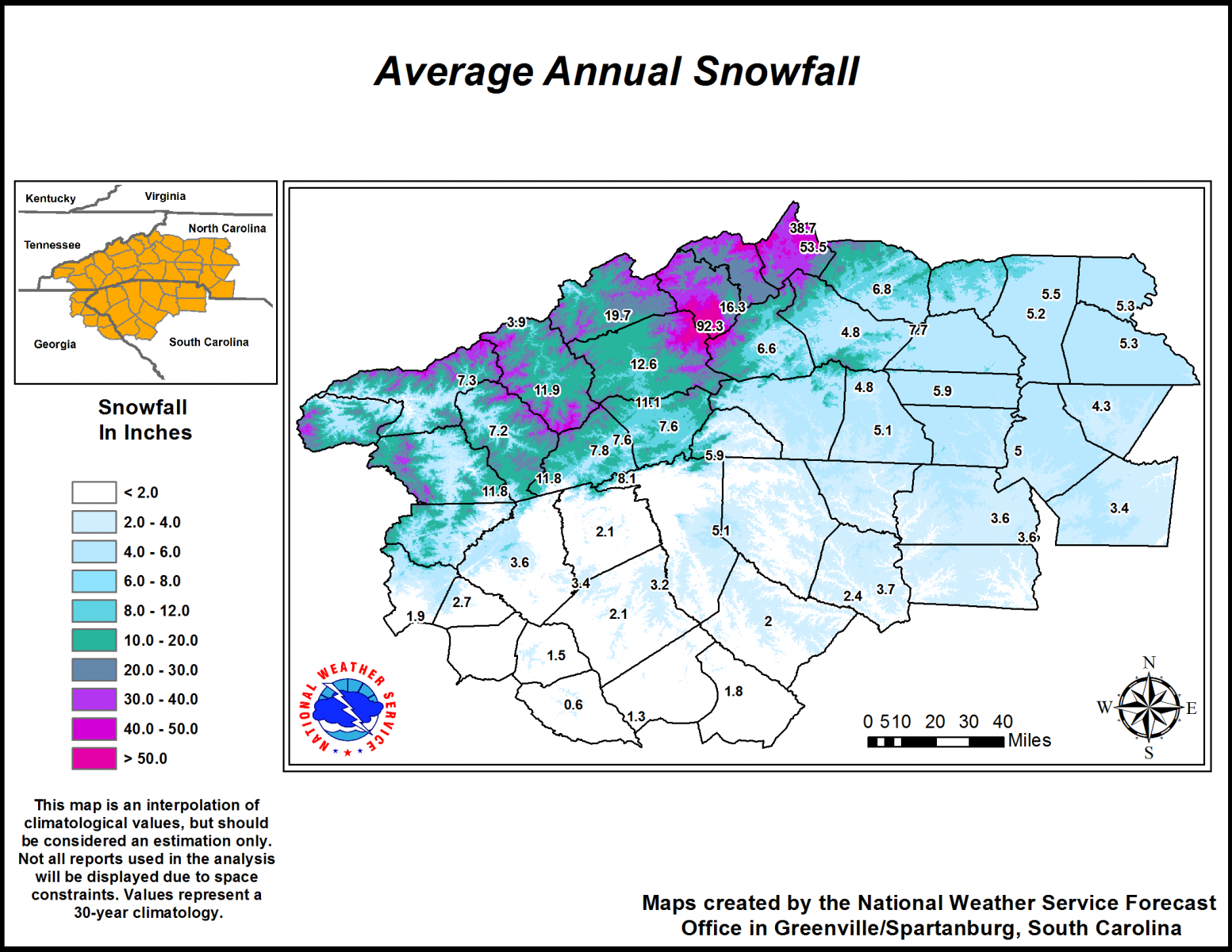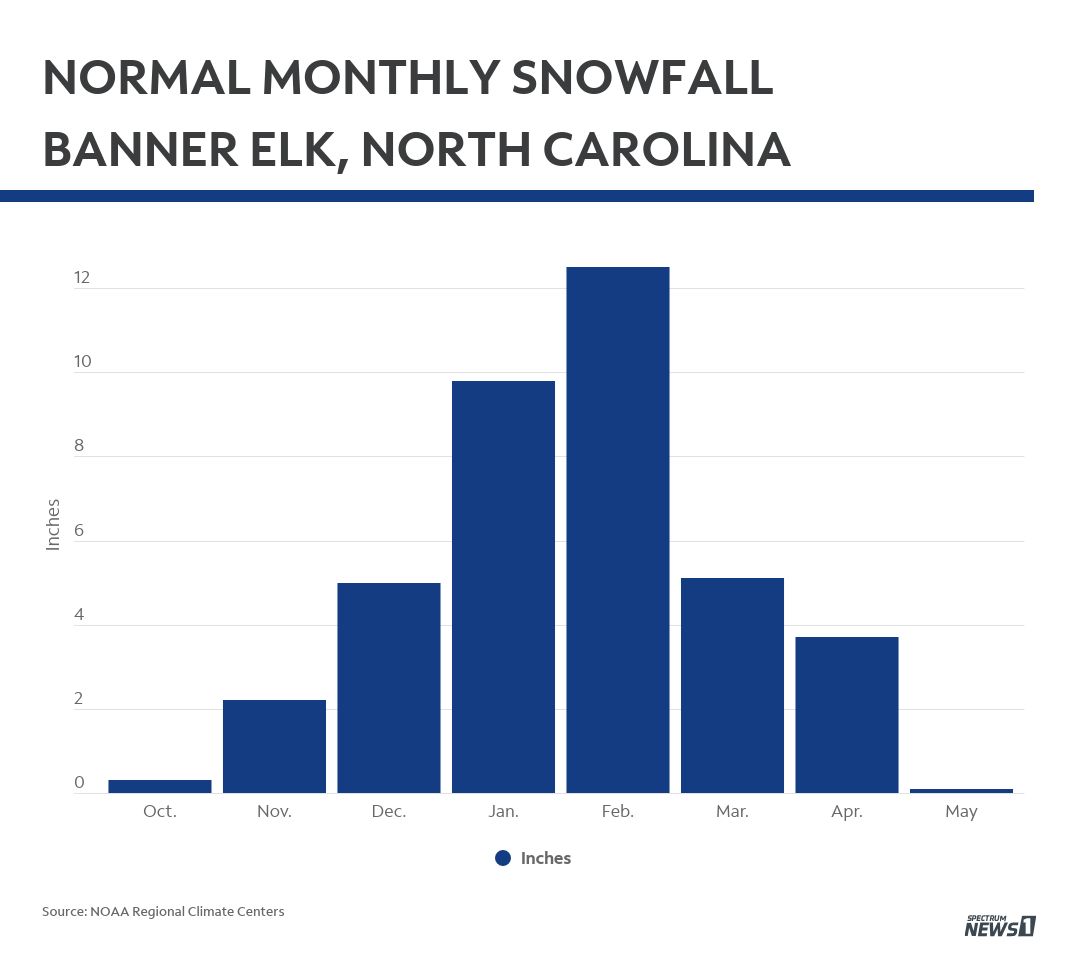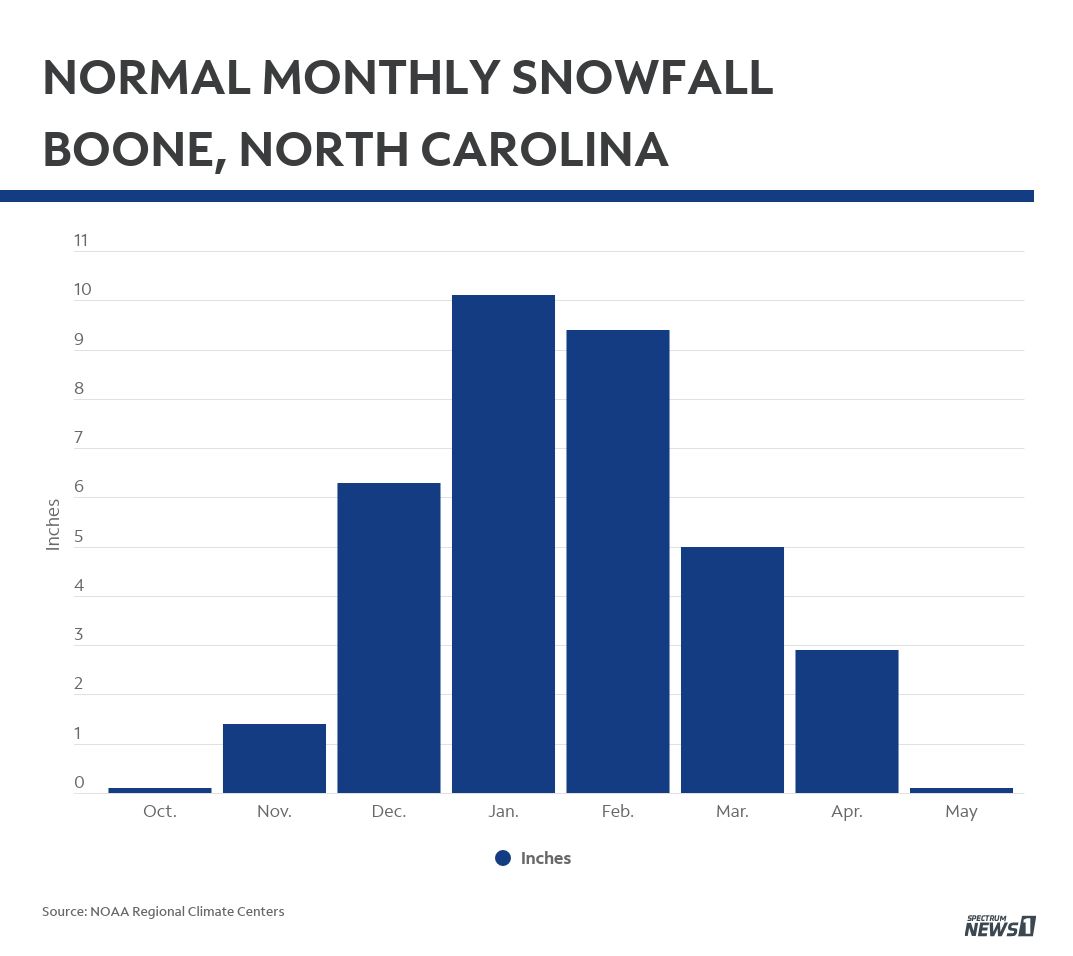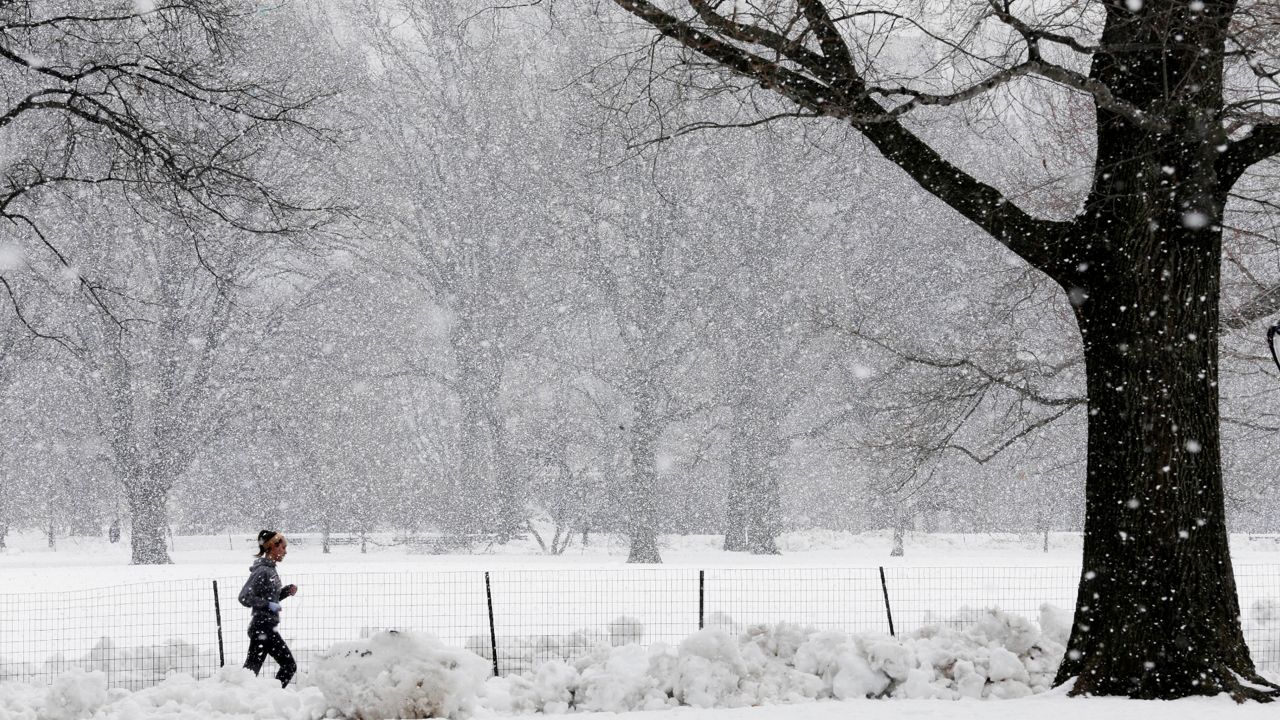Meteorological winter begins December 1, and along with the arrival of winter, snow pops to the forefront of a lot of folks' minds – I know it does for this snow fan! So I thought I would run through some snow climatology for western North Carolina.
First of all, for Charlotte, the core of the 'snow season' is December through March. While a trace of snow was recorded in October 1887, snow in October is rare.
Snow has occurred in April far more frequently than in October, but generally speaking, significant April snow is fairly rare.
That leaves us with December, January, February, and March. One of the more interesting items of snow climatology around here is that March averages more snow than December. Specifically, Charlotte averages 0.6 inches of snow in March vs 0.3 inches in December.
The same concept holds true for Asheville as well. Asheville averages 1.9 inches in March and 0.9 inches in December.
In our region, January is historically the snowiest month in most areas. Charlotte averages 2.1 inches in January and Asheville averages 4.1 inches.
Finally, February is the second-snowiest month with Charlotte averaging 1.2 inches and Asheville averaging 2.2 inches.
For the season, the average yearly snowfall for Charlotte is around 5 inches and Asheville averages around 10 inches.

Keep in mind how we arrive at those averages. Some years have some huge snow totals, while other years we get little to no snow.
If you are wondering, the last winter Charlotte officially finished with over 10 inches of snow was the winter of 2003-2004, when 14.5 inches fell.
As you head into the mountains of northwest North Carolina, the snow totals take a huge jump upward, as you might expect. In Banner Elk, February is the statistically-snowiest month, averaging 12.5 inches. The seasonal average snowfall of 38.7 inches.

In Boone, January is the snowiest, averaging 10.1 inches, with the season averaging 35.3 inches.

Let it snow!



